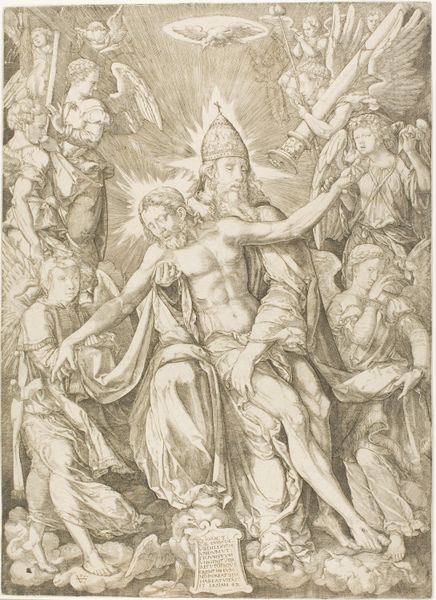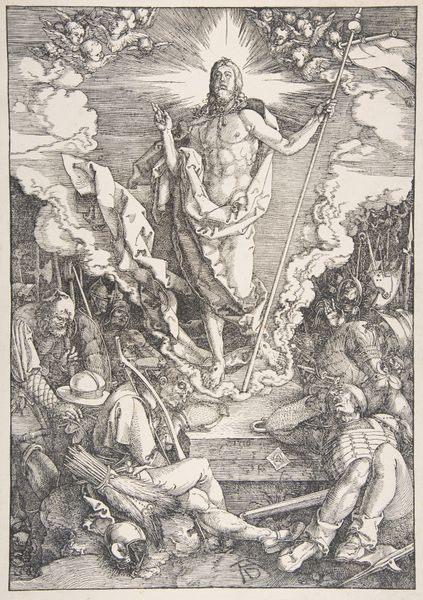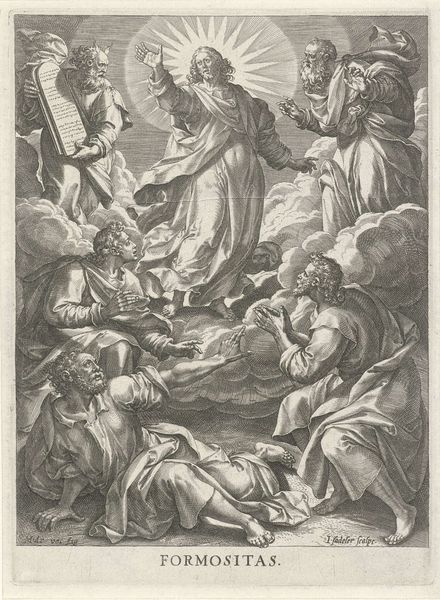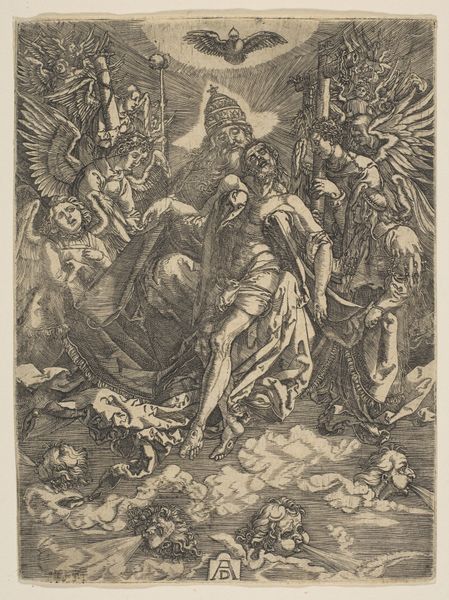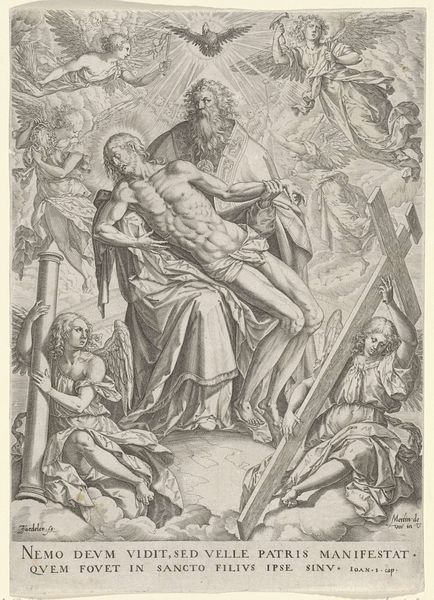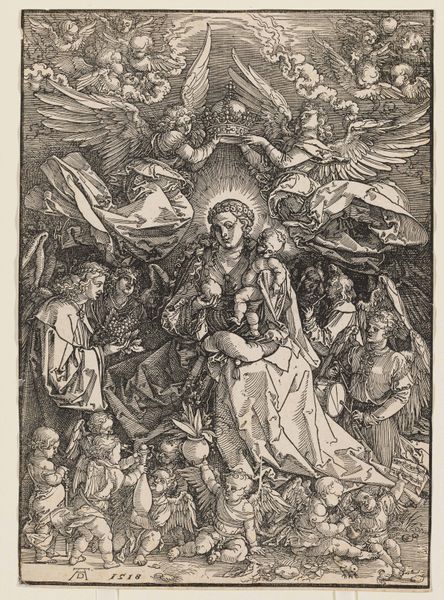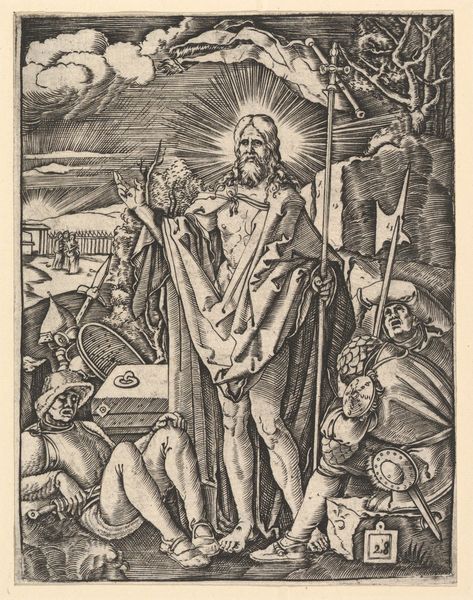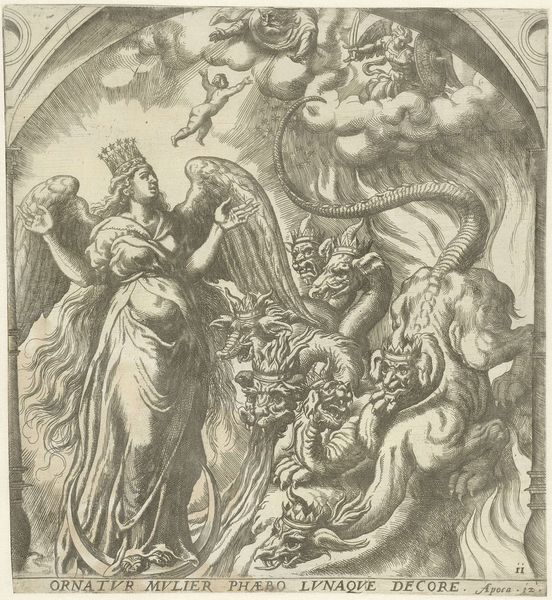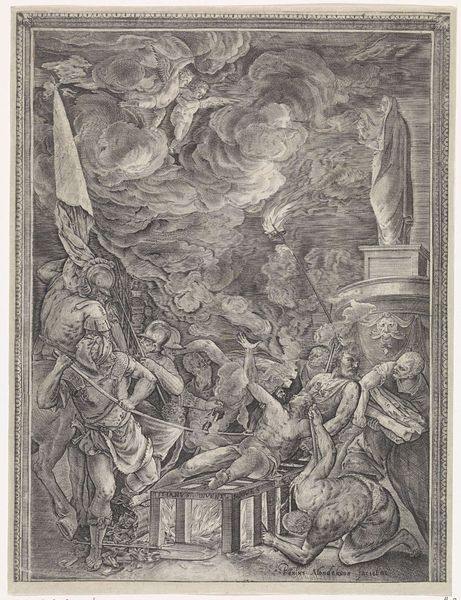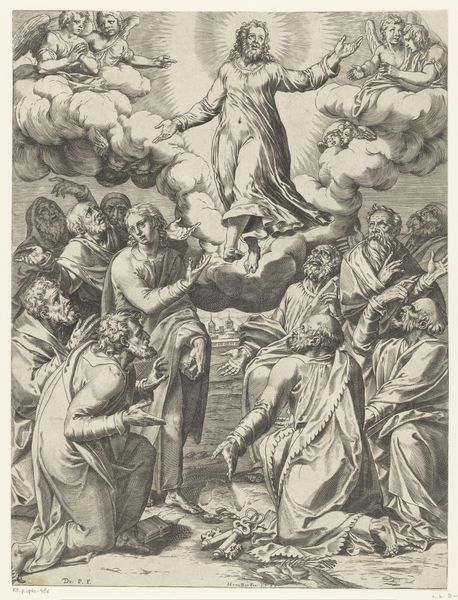
drawing, print, engraving
#
drawing
#
ink drawing
#
allegory
# print
#
figuration
#
cross
#
pencil drawing
#
line
#
history-painting
#
northern-renaissance
#
engraving
Dimensions: sheet: 15 3/16 x 11 in. (38.6 x 27.9 cm)
Copyright: Public Domain
Editor: Here we have Albrecht Durer's "The Holy Trinity," created between 1485 and 1528. It's an engraving, incredibly detailed. The overwhelming emotion I get from it is… solemnity. There’s just so much intricate work put into depicting this theological concept. How do you approach a piece so dense with religious meaning and rendered with such specific, painstaking labor? Curator: I approach it through the lens of its making. Durer’s engravings, like this one, demonstrate a mastery of technique that elevated printmaking from a craft to a fine art. Let’s consider the materials: the metal plate, the ink, the paper. Each involved a distinct set of skilled labor, from the mining of metals to the production of paper, doesn’t it? Editor: It does, definitely something to think about. How would those material considerations affect its reception in the culture at that time? Curator: Immensely. Prints like "The Holy Trinity" allowed for wider distribution of images, impacting religious devotion and artistic trends across social classes. It becomes less about the single 'art object' and more about how the production, distribution, and consumption of images are woven into the social fabric. It’s an allegorical representation with a material presence that affects devotional labor of viewers. Editor: So, seeing the art in its creation and consumption makes religious idea feel more down to earth. Curator: Precisely. The meaning isn’t just in the iconography; it’s embedded in the entire process – how the image came to be, how it was disseminated, and how it was received. This shifts our focus from simply admiring artistic skill to understanding the social implications of artistic production. Editor: That perspective helps connect the artwork to real lived experiences. It’s amazing to think about how an image made with such meticulous work and circulated in multiples could impact faith and daily life so profoundly. Curator: Exactly! And it reminds us to value the often unseen labor and materials that constitute all art, as they're essential for a deeper comprehension of both artistic and social history.
Comments
No comments
Be the first to comment and join the conversation on the ultimate creative platform.
